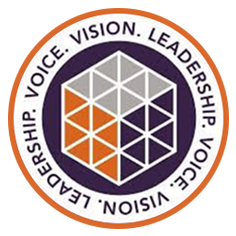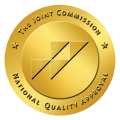Bipolar disorder is a complex mental health condition that can often be difficult to diagnose. While many people may lump all people with bipolar disorder into one group, there are actually three distinct types of bipolar disorder: bipolar I, bipolar II, and cyclothymia. The latter is often understood as being a more mild form of bipolar disorder, while bipolar I and II have very distinct differences.
What is the difference between bipolar I and II? In a very general sense, it’s all about how much time a person spends “up” versus “down” when they are experiencing a mood fluctuation. While all types of bipolar disorder share some similarities, they also have significant differences in symptoms, diagnosis, and treatment.
Understanding these distinctions is not just crucial for proper diagnosis, it is also important to help those suffering, and their loved ones, better understand how to get proper help and treatment. Many people with bipolar disorder require substance abuse treatment in their lifetime, and knowing one’s diagnosis can make the journey to effective treatment much easier
Defining Bipolar Disorder
Bipolar disorder is a mental health condition that is marked by episodes of mania, hypomania, and depression. These episodes are most often characterized by extreme shifts in mood, energy, and activity levels that can make it difficult for the person to go about their daily life.
While bipolar disorder can be difficult to manage on its own, it is treatable through a combination of regular therapy, medication, and lifestyle adjustments.
Myths About Bipolar Disorder
People can have assumptions when it comes to bipolar disorder that aren’t always true. While more and more awareness is being brought to bipolar disorder, it is important to address assumptions and common misconceptions in order to reduce stigma. This can make it easier for people with this disorder to seek mental health or dual diagnosis treatment.
Bipolar episodes are more intense and disruptive than the average person’s mood swings, caused by either behavioral or hormonal changes.
While bipolar disorder is characterized by manic and depressive episodes, many who suffer from the condition also experience periods of stability between episodes.
Bipolar disorder affects millions of people, and can affect their lives on a daily basis.
Bipolar disorder manifests differently across individuals, which is why it’s categorized into different types.
Bipolar disorder is a medical condition influenced by genetic, biological, and environmental factors. Personal weakness does not affect a person’s rate of having bipolar disorder.
The Two Main Types of Bipolar Disorder

While cyclothymia is a recognized form of bipolar disorder, I and II are by far the most common types of bipolar disorder. It’s important to recognize the differences between them.
Bipolar I
Of the two conditions, bipolar I is often considered to be more severe. This is often due to the fact that bipolar I is accompanied by more intense manic episodes. In some extreme cases, bipolar I can cause psychotic episodes that require hospitalization.
Some common symptoms of mania in bipolar I include:
- Decreased need for sleep
- Racing thoughts
- Rapid speech
- Increased energy levels
- Grandiosity or inflated self-esteem
- Impulsive or risky behaviors
While not required for diagnosis, someone with bipolar I may also experience periods of severe depression. These depressive episodes can be just as common and debilitating as manic episodes.
Symptoms of these depressive episodes may include:
- Fatigue
- Difficulty concentrating
- Changes in appetite
- Persistent feelings of sadness or hopelessness
- Suicidal thoughts
For someone suffering from bipolar I, manic episodes can last up to seven days and sometimes longer if left untreated. Depressive episodes can last longer, typically for at least two weeks.
Bipolar II
While just as serious, bipolar II is often perceived as less severe than bipolar I. Manic and depressive episodes still cycle in and out, but at a less severe intensity as bipolar I.
Hypomanic symptoms associated with bipolar II can include:
- Elevated or irritable mood
- Decreased need for sleep
- Increased energy or activity
- Enhanced productivity or creativity
While hypomanic episodes may not be as debilitating and don’t typically disrupt a person’s daily life as much, these hypomanic episodes can still lead to issues such as poor decision-making and strained relationships.
Depressive episodes, on the other hand, can be much more intense. Someone with bipolar II may experience symptoms like:
- A loss of interest in activities
- Intense feelings of sadness or emptiness
- Physical symptoms such as aches and pains
- Changes in sleep patterns
- Suicidal thoughts or actions
While bipolar II symptoms may not be as extreme as bipolar I, they are still mental health issues that require attention and treatment for healthy living. There is no shame in having bipolar disorder, and it doesn’t mean anything about that person’s integrity. Seeking treatment and investing time in one’s mental health is a responsible choice when dealing with bipolar disorder.
Major Differences Between Bipolar I and Bipolar II
We’ve touched on it a little, but let’s take a more in-depth look at some of the key differences between bipolar I and bipolar II. While the biggest difference between the two is the severity and duration of manic and depressive episodes, those are not the only two distinctions.
Bipolar I manic episodes can severely impair functionality, sometimes requiring emergency intervention. In contrast, individuals with bipolar II may appear highly functional during hypomanic episodes.
Bipolar I is often easier to diagnose due to the obvious nature of manic episodes. Bipolar II, on the other hand, may be misdiagnosed as a major depressive disorder because hypomania can go unnoticed or be dismissed as a period where the person “feels better.”
Bipolar I is characterized by full-blown manic episodes that can lead to hospitalization or psychosis. Mania can disrupt work, relationships, and physical health due to risky behavior and poor judgment. Bipolar II involves hypomanic episodes, which are less severe and don’t lead to the same level of dysfunction or hospitalization. However, these episodes can still cause issues in personal and professional life if left unchecked.
No matter the type of bipolar one is diagnosed with, it’s important to develop a treatment plan with a medical professional to ensure the flux of symptoms doesn’t hinder overall functioning. Just because a person is diagnosed with a “less severe” form of bipolar disorder doesn’t mean their experience is invalid. Everyone with a mental disorder deserves attention and support in building a stable life.
Bipolar Disorder’s Relationship with Addiction

As is the case with many mental health conditions, it is not uncommon for someone suffering from bipolar disorder to also develop a substance use disorder.
Bipolar disorder symptoms can be overwhelming. When not properly treated, it can make going through life very difficult. Someone suffering from bipolar disorder may turn to drugs or alcohol as a form of self-medication to feel better. But while self-medicating may seem like an effective tool, abusing drugs and/or alcohol addiction can not only worsen existing bipolar symptoms but can also lead to dependency and addiction.
Dual Diagnosis Treatment for Bipolar Disorder and Addiction
While the combination of substance abuse and bipolar disorder may feel like a vicious and never-ending cycle, it’s important to remember that dual diagnosis treatment can help address both conditions. Developing a relapse prevention plan can help keep a person on track with their recovery while also accounting for their bipolar disorder.
Dual diagnosis treatment often includes a combination of therapies and treatments, such as:
- Integrated Care: In order to properly and effectively treat both conditions, they both have to be addressed simultaneously.
- Medication Management: Medications may be administered for both the treatment of withdrawal symptoms as well as treatment of bipolar symptoms.
- Therapeutic Support: Techniques such as Cognitive Behavioral Therapy (CBT) and Dialectical Behavior Therapy (DBT) can be used to build coping skills and address both conditions.
- Support Groups: Programs like Alcoholics Anonymous (AA) provide peer support and accountability.
Heal From Addiction with Dual Diagnosis Treatment at Magnolia City Detox
If you or a loved one are struggling with bipolar disorder, addiction, or both, seeking professional help is the first step toward recovery. At Magnolia City Detox, we understand the importance of professional help when it comes to treating a number of complex mental health and substance abuse conditions. That’s why we offer comprehensive care and personalized treatment plans that address each individual’s unique needs.
Whether you’re managing symptoms, seeking a diagnosis, or beginning treatment, Magnolia City Detox is here to support you every step of the way. Contact us to learn more about our services and start your journey to wellness.

















